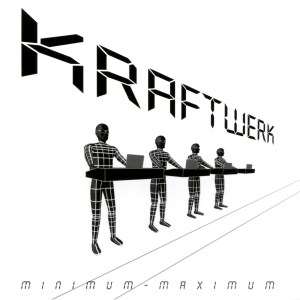Going by their Mastodon account, seems they were erroneously detected as “from a US-sanctioned region” and it took too long for said error to be resolved, so they just made the switch.
f00f/eris
Here to follow content related to Star Trek, Linux, open-source software, and anything else I like that happens to have a substantial Lemmy community for it.
Main fediverse account: @[email protected]
- 1 Post
- 35 Comments

 11·1 year ago
11·1 year agoYeah, only thing I can think of is the few banking apps that don’t have web versions.
I was lucky enough to have all my banking and 2FA apps work perfectly on GrapheneOS. The only app that gave me a significant amount of trouble was iClicker, which my school uses for attendance. That was fixed by enabling Google Play location services, and there was a (fairly expensive) alternative anyway.
I did have to buy a new phone to use Graphene, because I got my previous one as part of a carrier’s cell plan, and it had a locked BIOS. Though I think the purchase was worth it, and just moving my SIM card from one device to another was enough to get it working.
of course not!

 4·1 year ago
4·1 year agoHandbrake will probably still work if you compile it from source, but it seems like upstream isn’t paying much attention to libdvdcss support.
The version in Debian’s repo still works for me, anyway.
Yeah, it’s fake, and as other commenters have pointed out, it’s also inaccurate to how the GPLv2 works. It was not meant to convince anyone.

 111·1 year ago
111·1 year agoI came across a bunch of those recently, which is how I came up with the idea for this, as a parody :)
Internet horror is disappointingly un-creative. I have no idea why the weakest works (sonic.exe, anti-piracy, kill screens) always end up becoming huge trends, or why so few people try to put a significant twist on said trends.

 762·1 year ago
762·1 year agoTons of companies are shipping Linux without giving users access to the source code, it’s just that only one has the term “Tivoization” named after it.

 1·1 year ago
1·1 year agoI’ll probably use Codeberg or another Forgejo server for my next programming project, if/when I have one that is far enough along to publish (motivating myself to get that far is a tall task). Until then, everything I’d consider contributing to is either on GitHub, or is self-hosting some other software, so I don’t have a reason to create an account yet.

 29·2 years ago
29·2 years agoI’ve switched to FreeTube for now, it still works using the Invidious API. This is happening because YouTube is testing forced login to watch videos or use the API. There is a workaround it seems, but we’ll have to wait for all the major clients to roll it out.

 1·2 years ago
1·2 years agoI’m using an AMD Ryzen iGPU on Wayland. I switched to Testing because the support already existed, but the kernel and mesa versions in stable were buggy for my particular GPU and I didn’t want to make a FrankenDebian.

 30·2 years ago
30·2 years agoFor me, the outdated packages in stable have actually gotten better over time, as DEs get closer to a place where I don’t need any major updates to enjoy using them, Flatpaks become more readily available, and on a subjective level, I get less and less invested in current Linux news. Before Debian became my “forever distro”, I’d hopped to it a few times, and often found myself wishing for a newer piece of software that wasn’t in backports or flathub, or simply being bored with how stable it is, but that’s been happening less and less. And I feel like Debian 12 in particular left me with software that I wouldn’t mind being stuck with for two years.
I’ve gotten warnings to upgrade my browser with Debian’s Firefox ESR, but they never affected a website’s usability in a way that a newer version would fix, and they do provide security updates and new ESR series when they come out; even if you must have the newest Firefox, you can use the Flatpak.
Additionally, I’m currently on testing in order to get better support for my GPU, and each time I’ve tried to use it, it’s worked for me for a longer time than the last as I get better at resolving or avoiding broken packages. If you do experience issues like the one you described, and can replicate them, and no one else has already reported them, you should report them to Debian’s bug tracker. The whole point of Testing is to find and squash all the critical bugs before the next stable releases.

 9·2 years ago
9·2 years agoDebian! It’s stable, elegant, and doesn’t impede customization. I distro-hopped a lot over the years - some that I ended up disliking included KaOS (severely limited software repository), Clear Linux (only way to get ffmpeg was to compile it from source) and Fedora (very slow); most I liked, and just decided to move on at some point. But I kept coming back to Debian, and eventually got to a point where instead of trying a different distro when Debian broke, I would just reinstall Debian.
I’d be interested to try VanillaOS or another “immutable” distro at some point in the future. See if they’ve matured enough for my day-to-day use.

 4·2 years ago
4·2 years agoI’ve had great experience with QKSMS on GrapheneOS. Thanks for directing me to the fork, I’m switching to it right away.

 11·2 years ago
11·2 years ago- Create a source control repository containing all your code, and publish it to an online code forge. GitHub’s docs might help with this: https://docs.github.com/en/get-started/start-your-journey
- Choose an open-source license and add it to the repository as a LICENSE file. If you want to require any projects that build upon yours to be open-source too, the GNU GPL is a good choice. If you want to allow proprietary programs to include your library without releasing any source code other than that which is directly based on yours, the GNU LGPL is good for that. If you want to allow people to do whatever they want, even use all your code as the basis of a proprietary program without credit, the Unlicense is a good choice. There are a lot of licenses with different degrees of “copyleft” and attribution requirements in between. Technically publishing with a license file is all you need to do, but there are more things you should do.
- Create a README text file describing what your program does, and instructing users on how to compile and run it. Consider including more detailed documentation on how to use it, as well.
- Clean up your code and file layout so that it’s as easy as is feasible for other programmers to understand.
- Promote your project to whoever you think might find it useful!

 8·2 years ago
8·2 years agoI have to borrow a school laptop just to do proctored exams, because their “lockdown browser” doesn’t support Linux, and even if it did, it seems to do some things in kernel mode, so I don’t want it on my system.
Surprisingly, most classes at my university are entirely FOSS based, aside from that one piece of software, an obscure scientific program that only one assignment used, and MATLAB (which is easily replaced by GNU Octave.)

 6·2 years ago
6·2 years agoUnfortunately, the state of Android music players is not great. Currently I have two FOSS music players installed: Metro Music Player (the F-Droid version of Retro Music Player) and mucke. mucke has a ton of really cool features that improve the shuffle experience but it’s actually worse than most apps at pulling album art. Retro/Metro has beautiful UI, and has pretty good features for customization, but lacks the cool features mucke has and is less stable. Both have more than one annoying bug, but it took me a while to find music players that had this few dealbreakers.


Just as long as it isn’t a .rar.